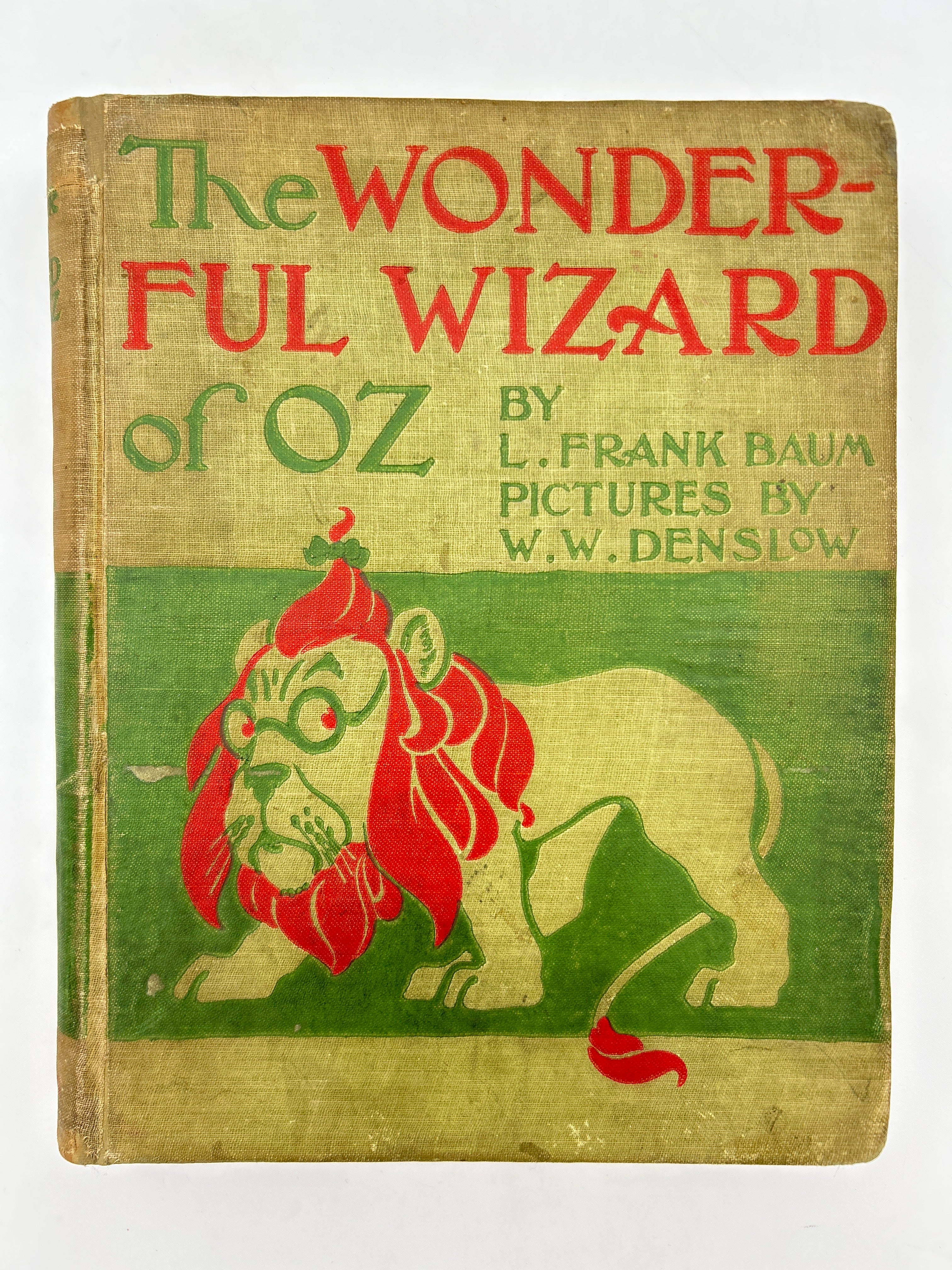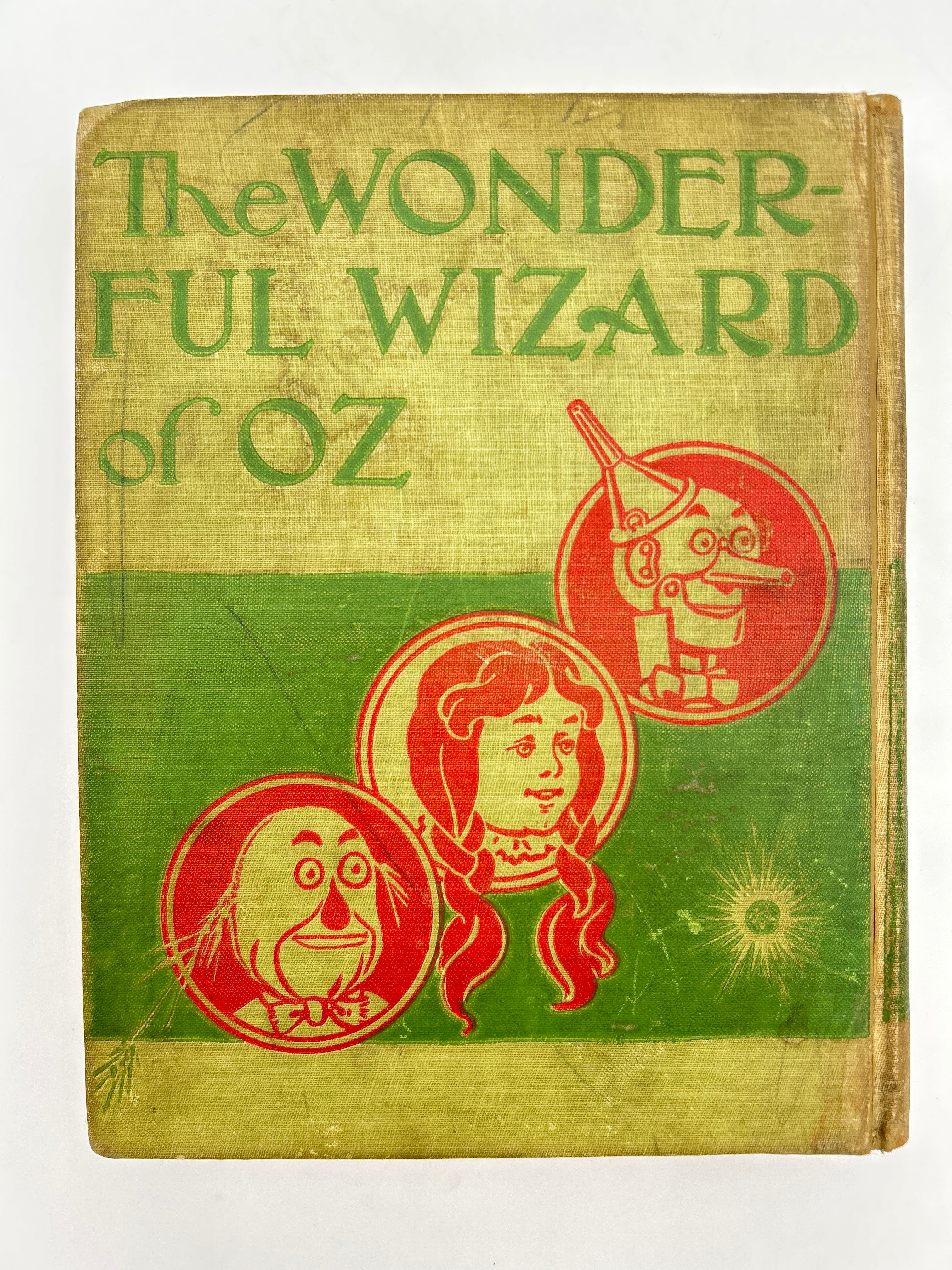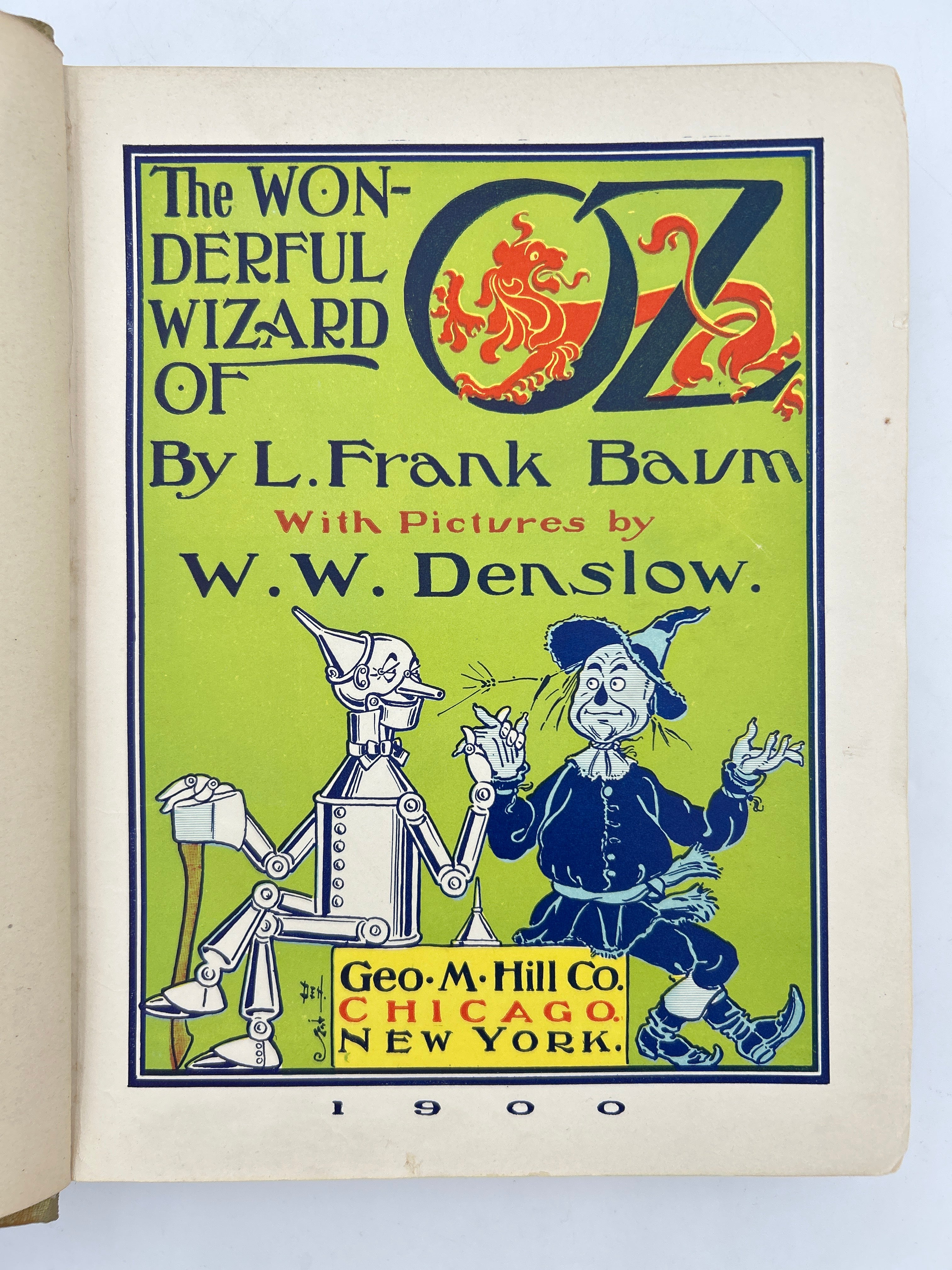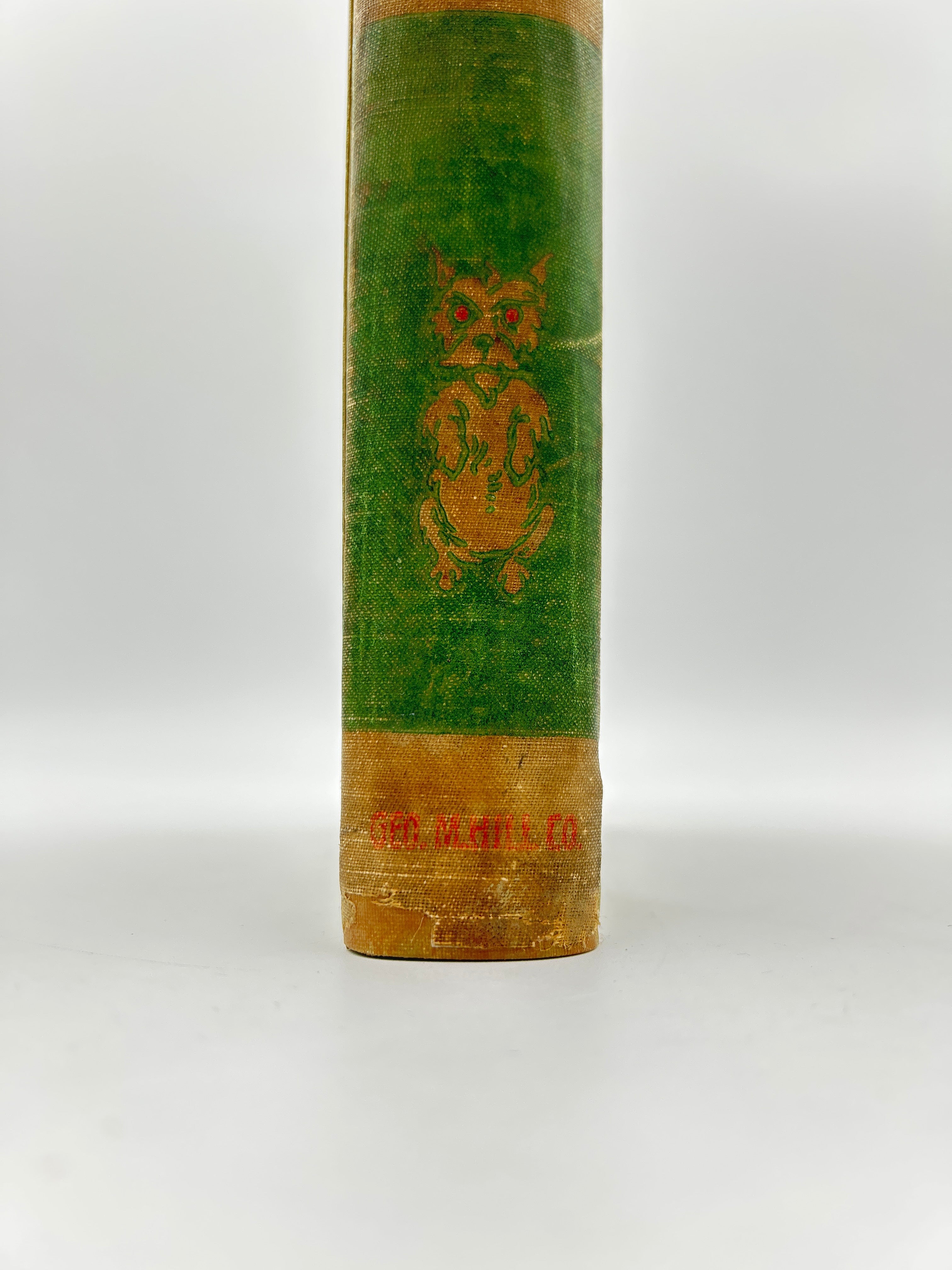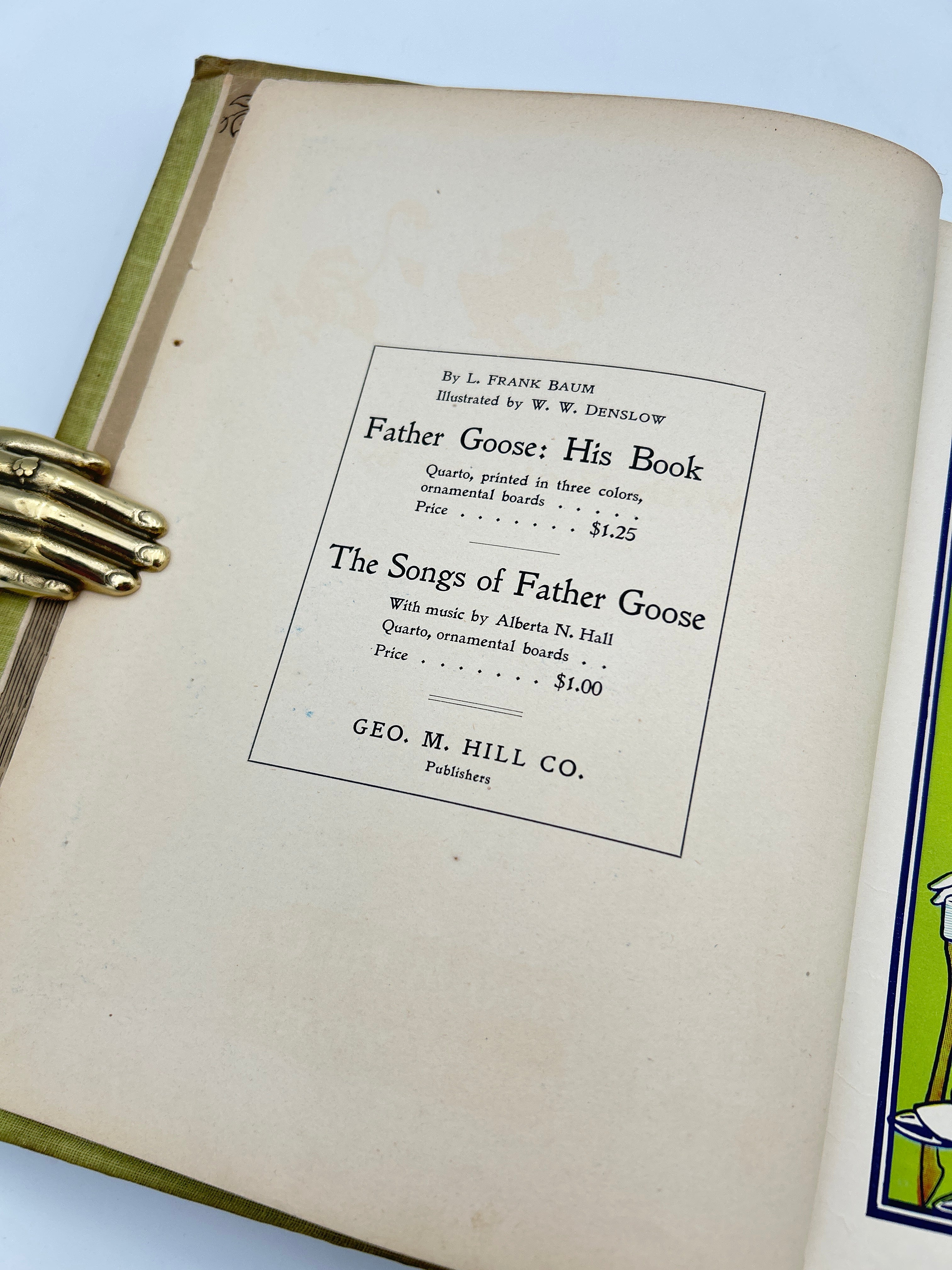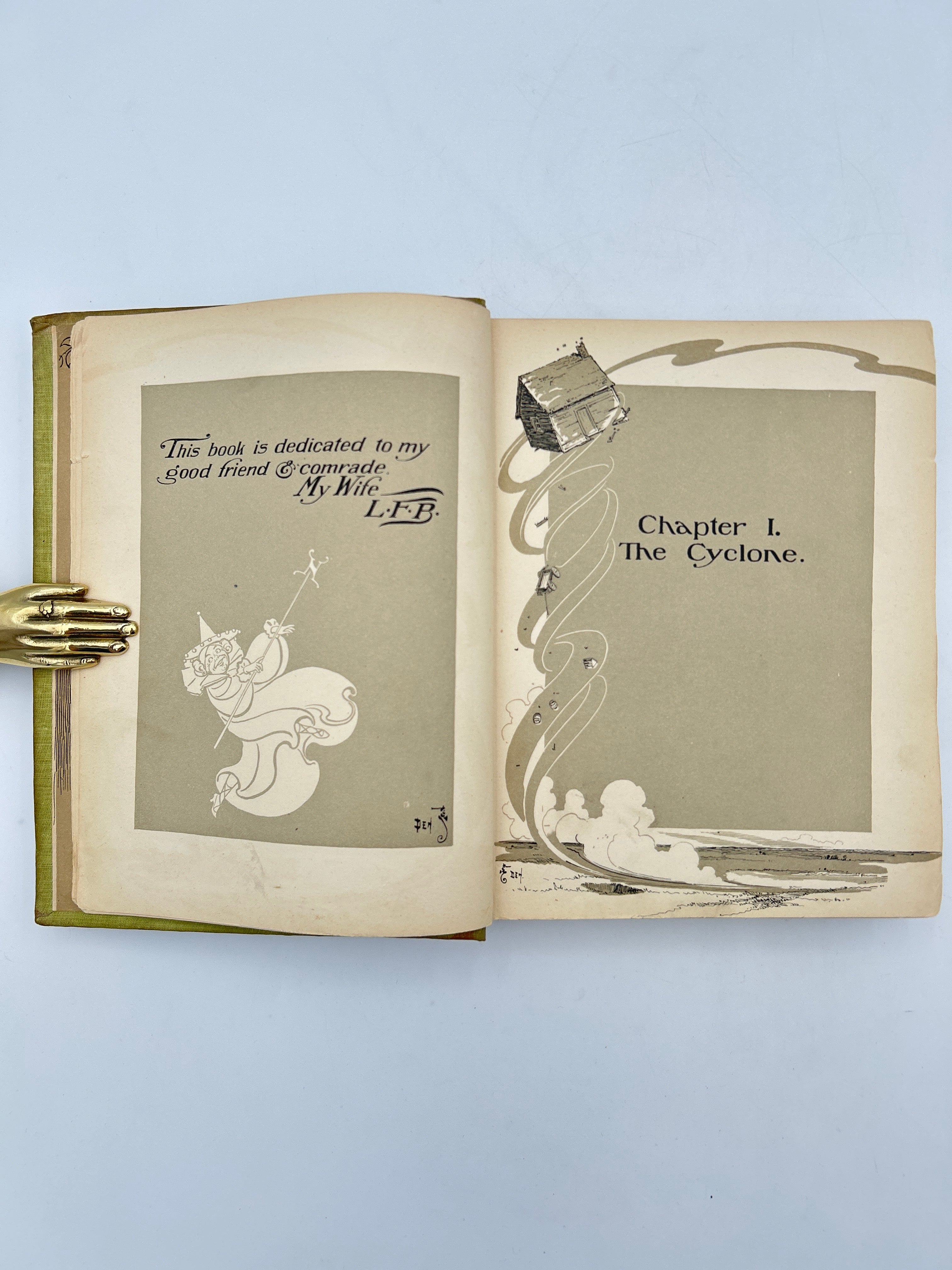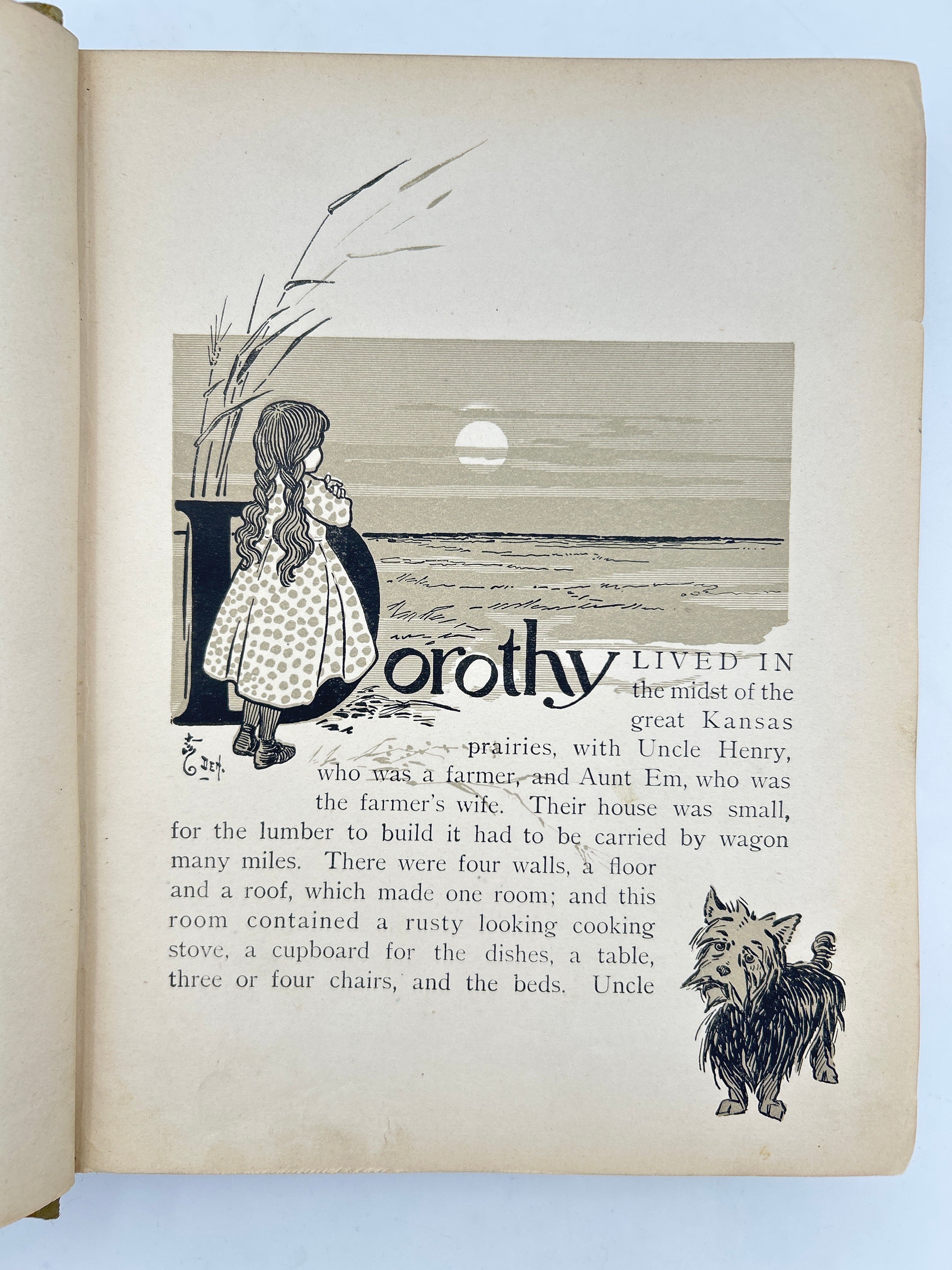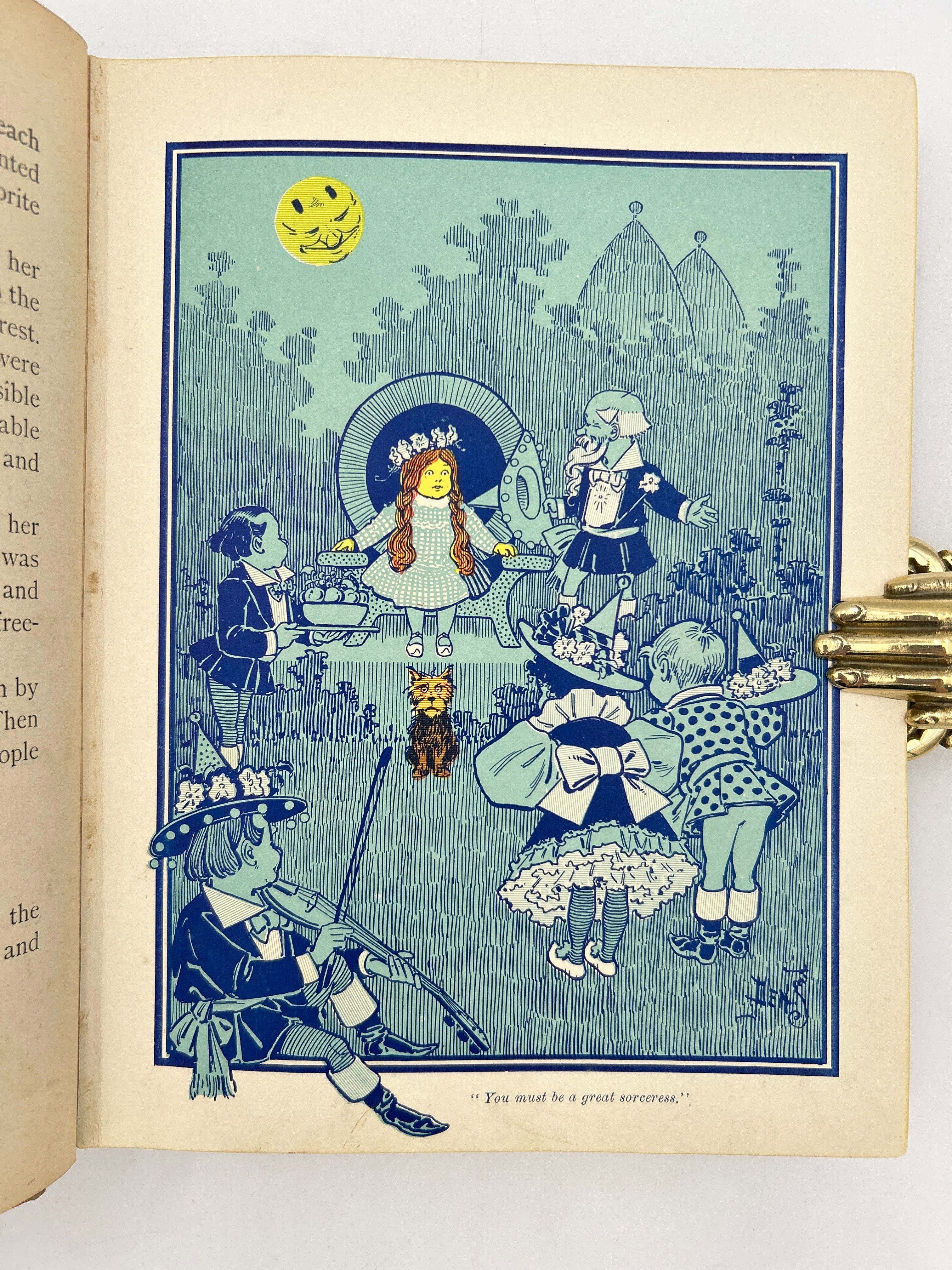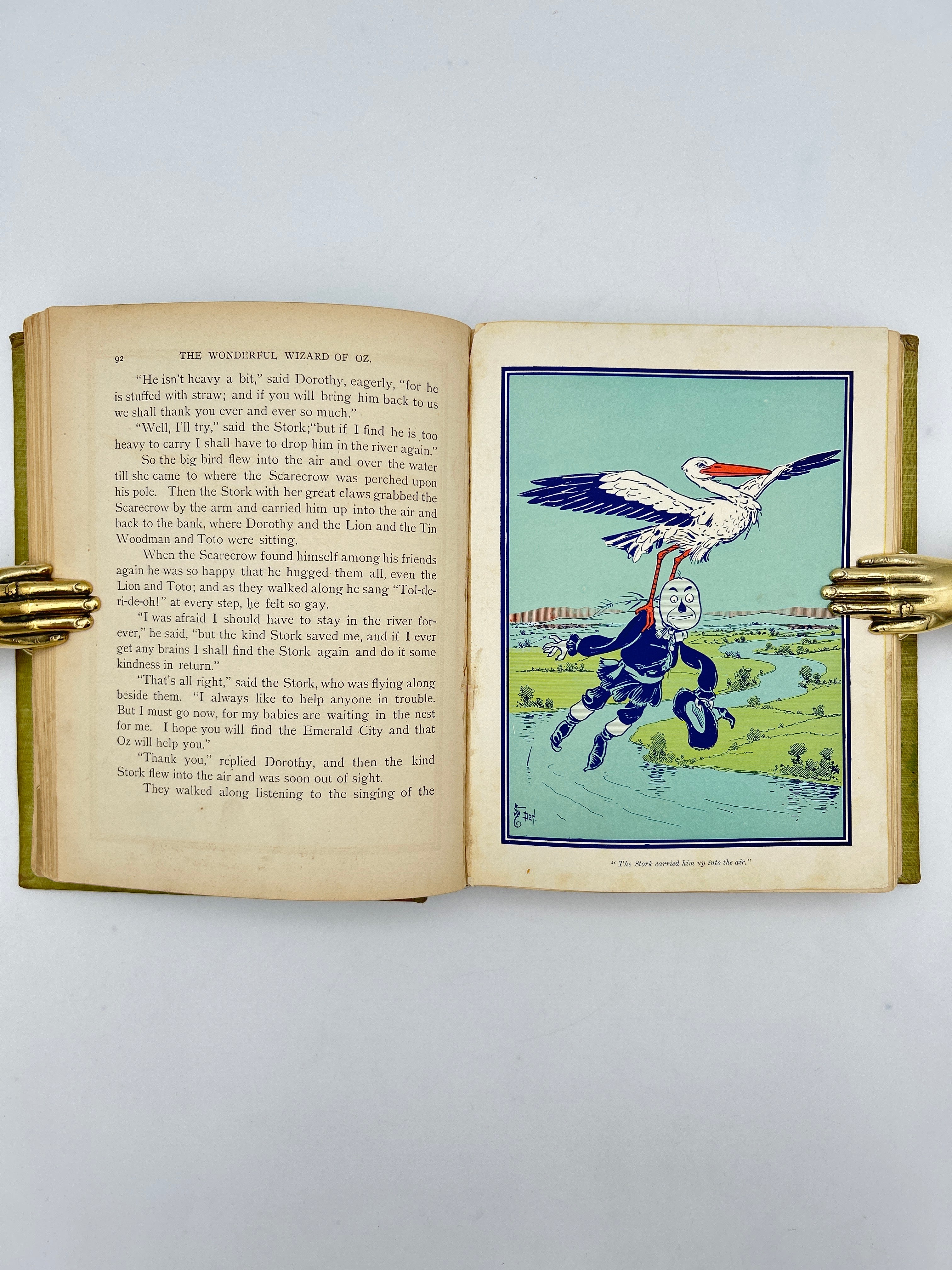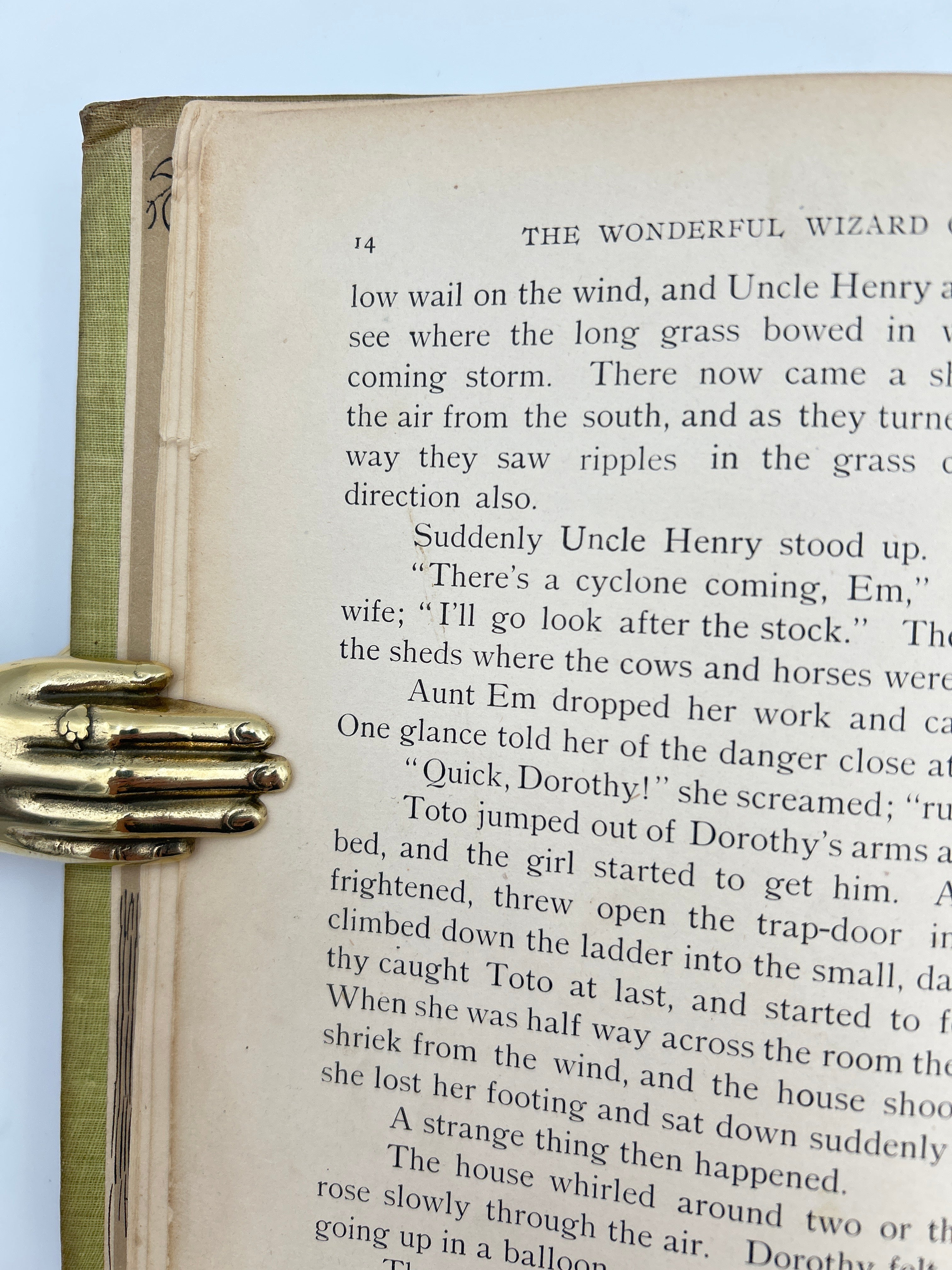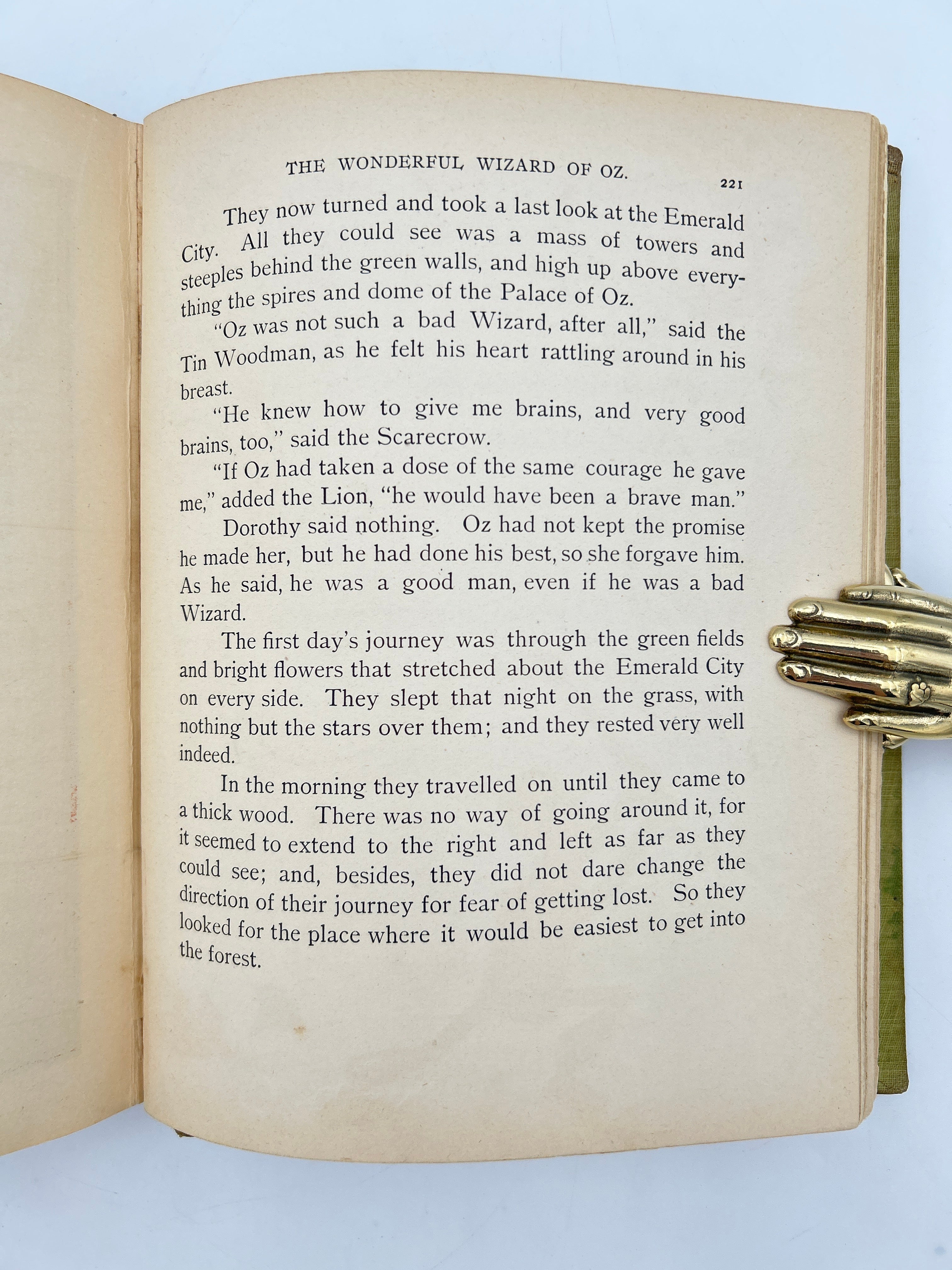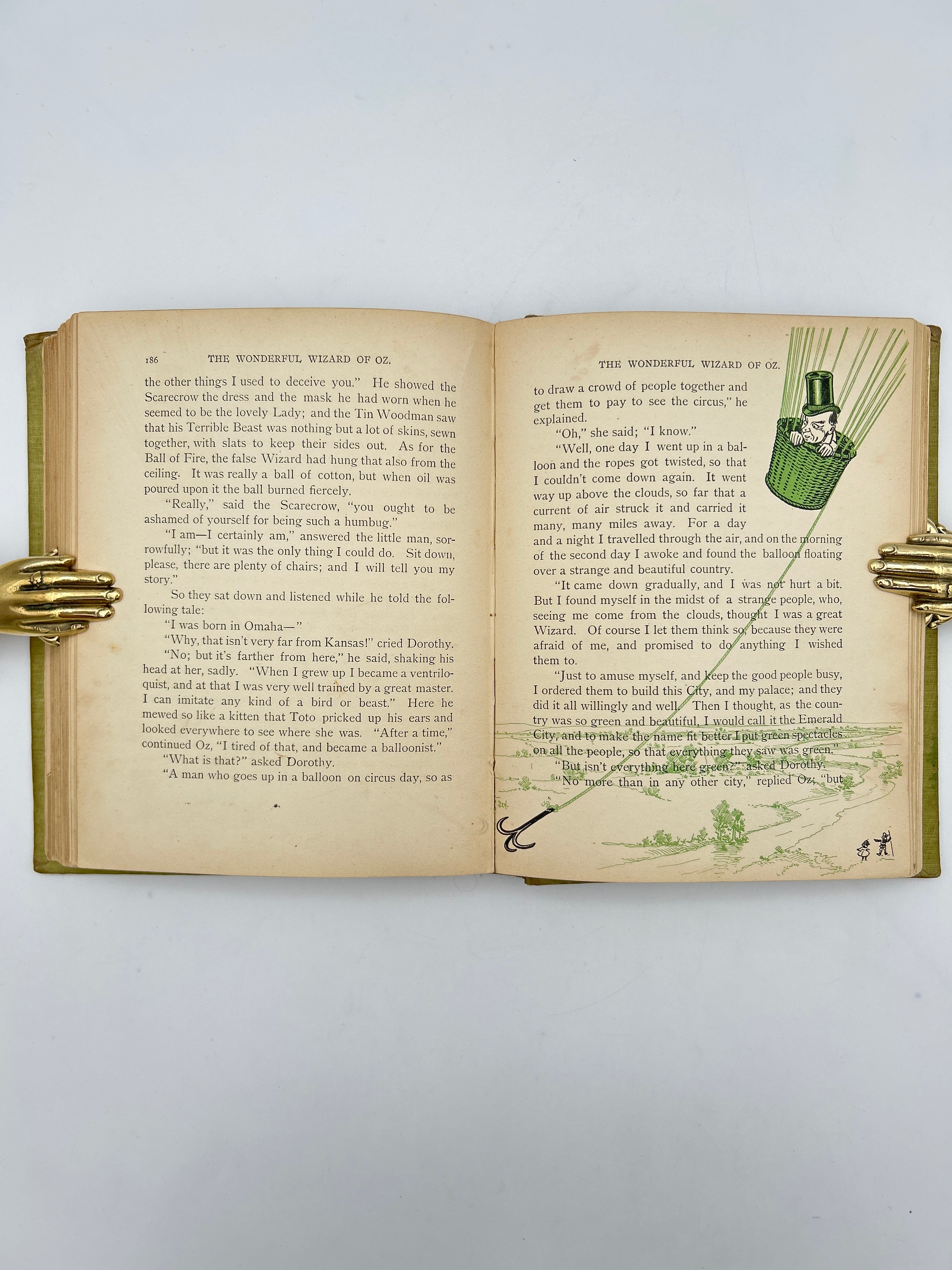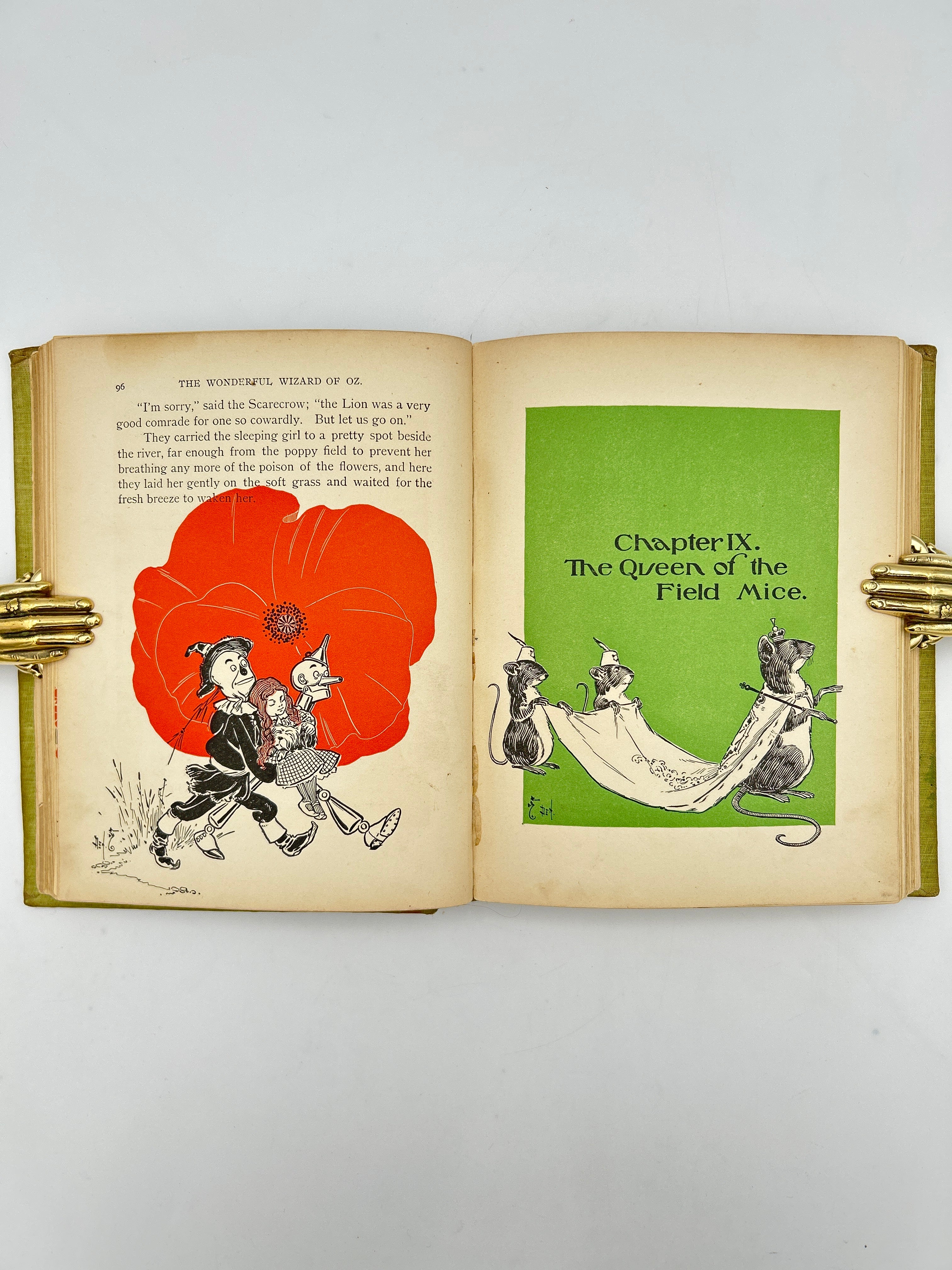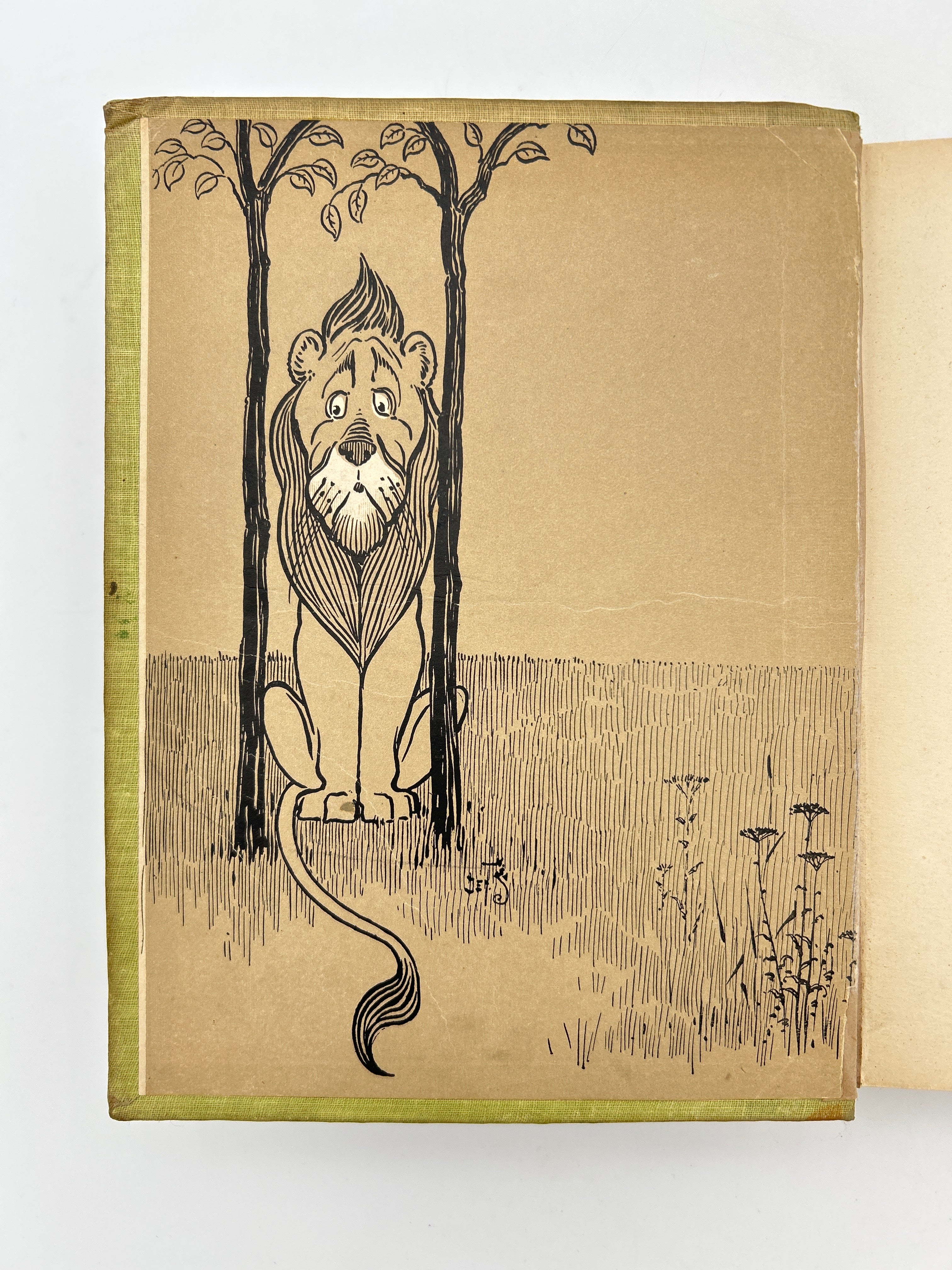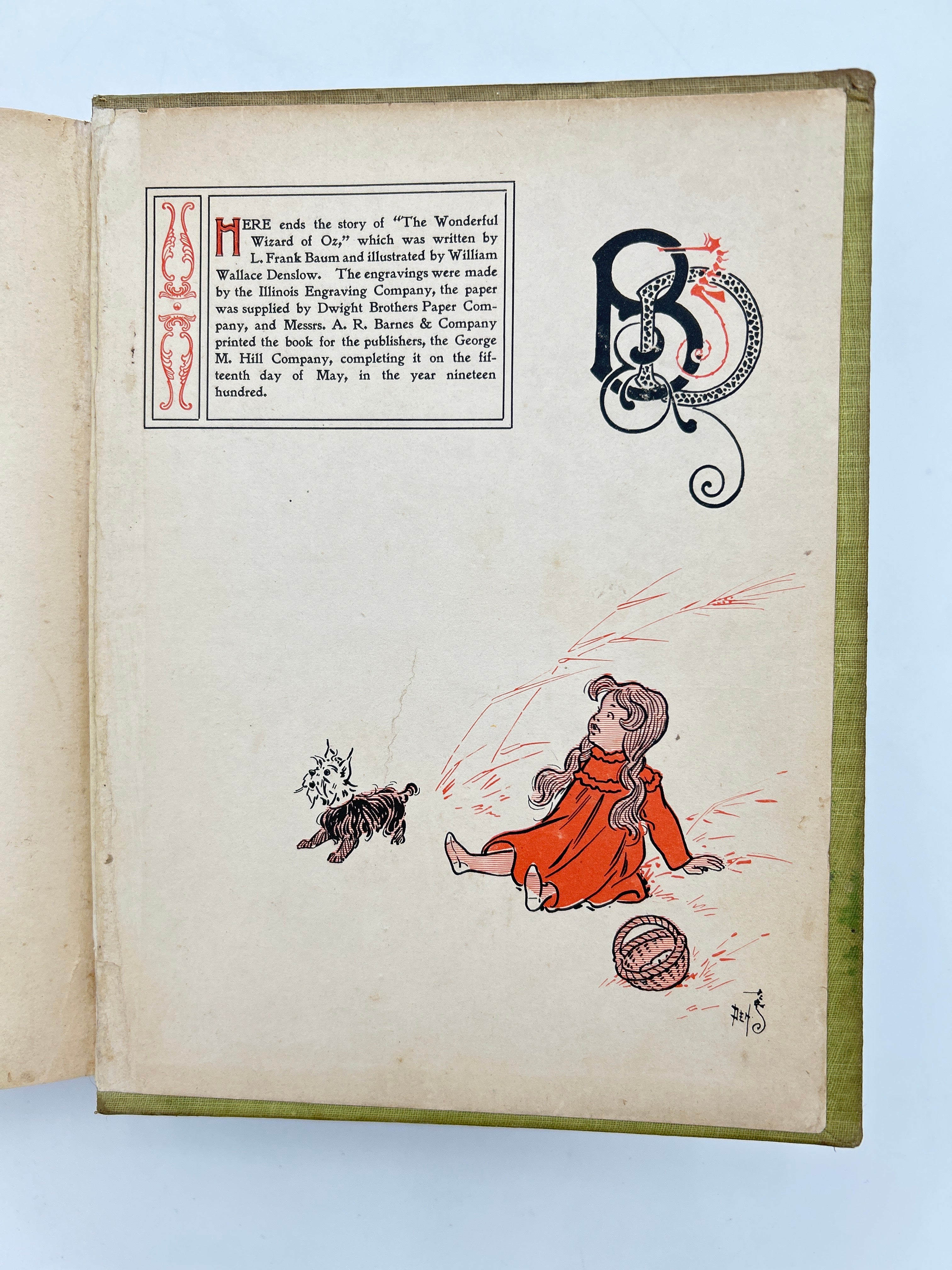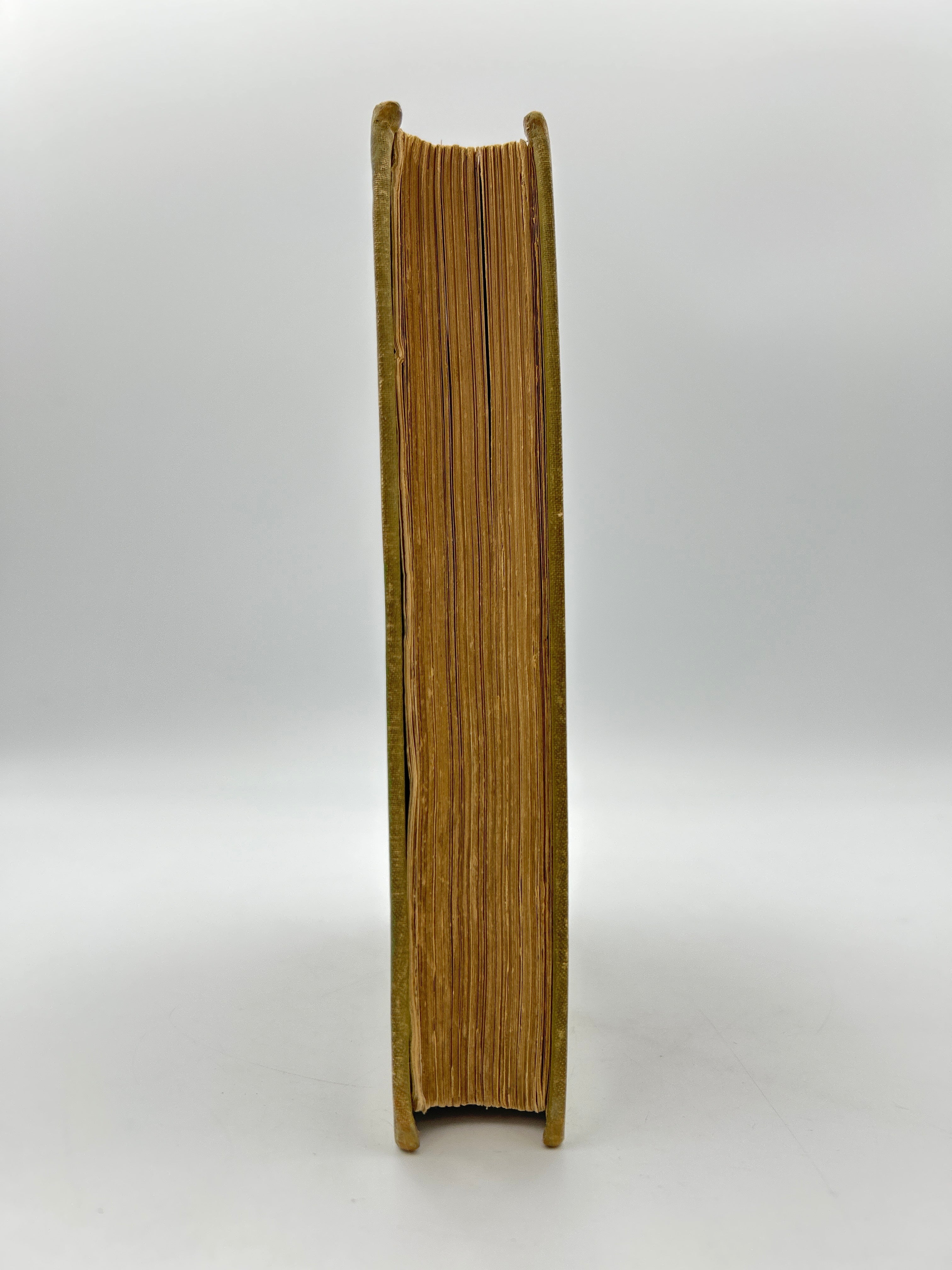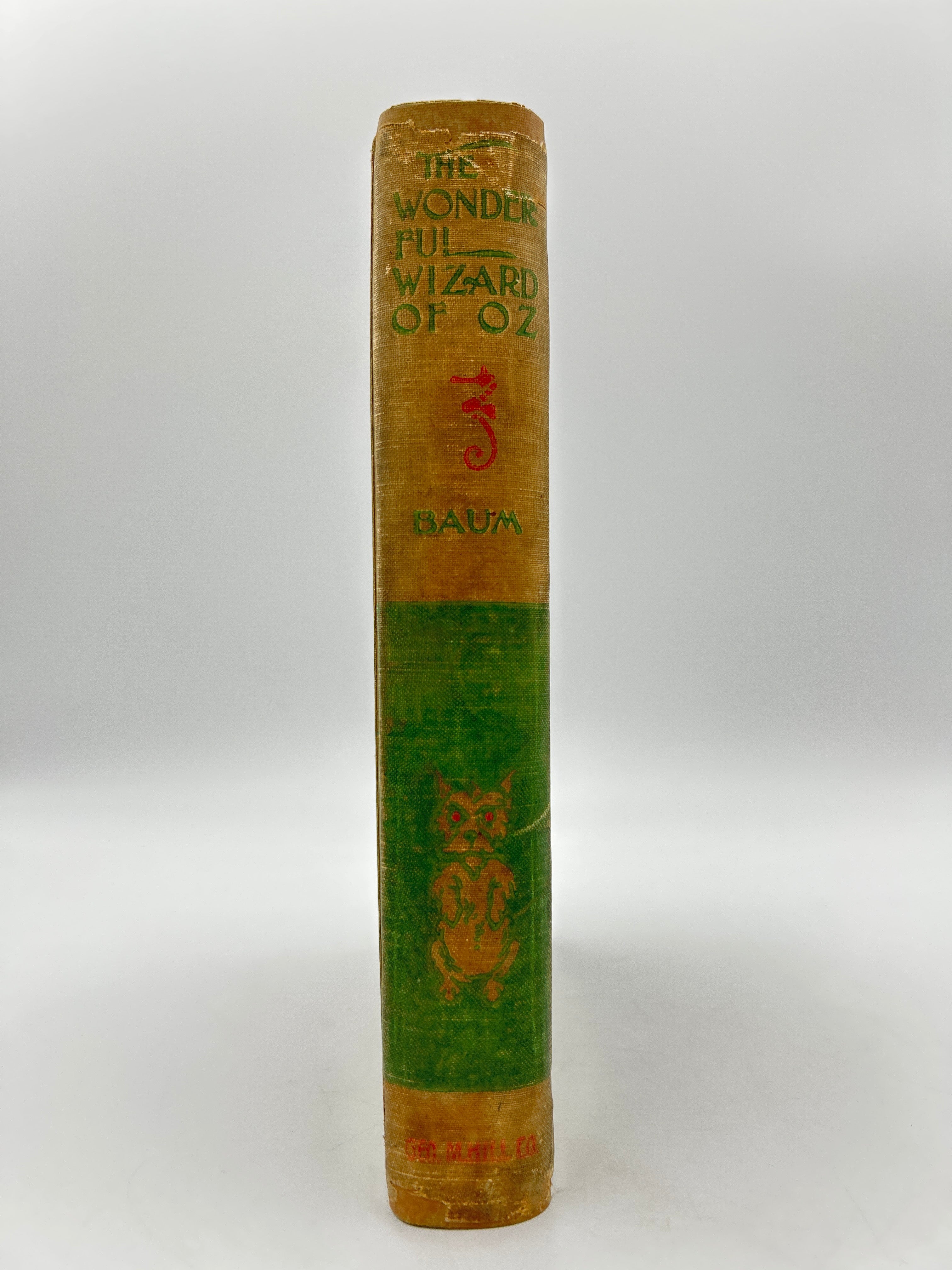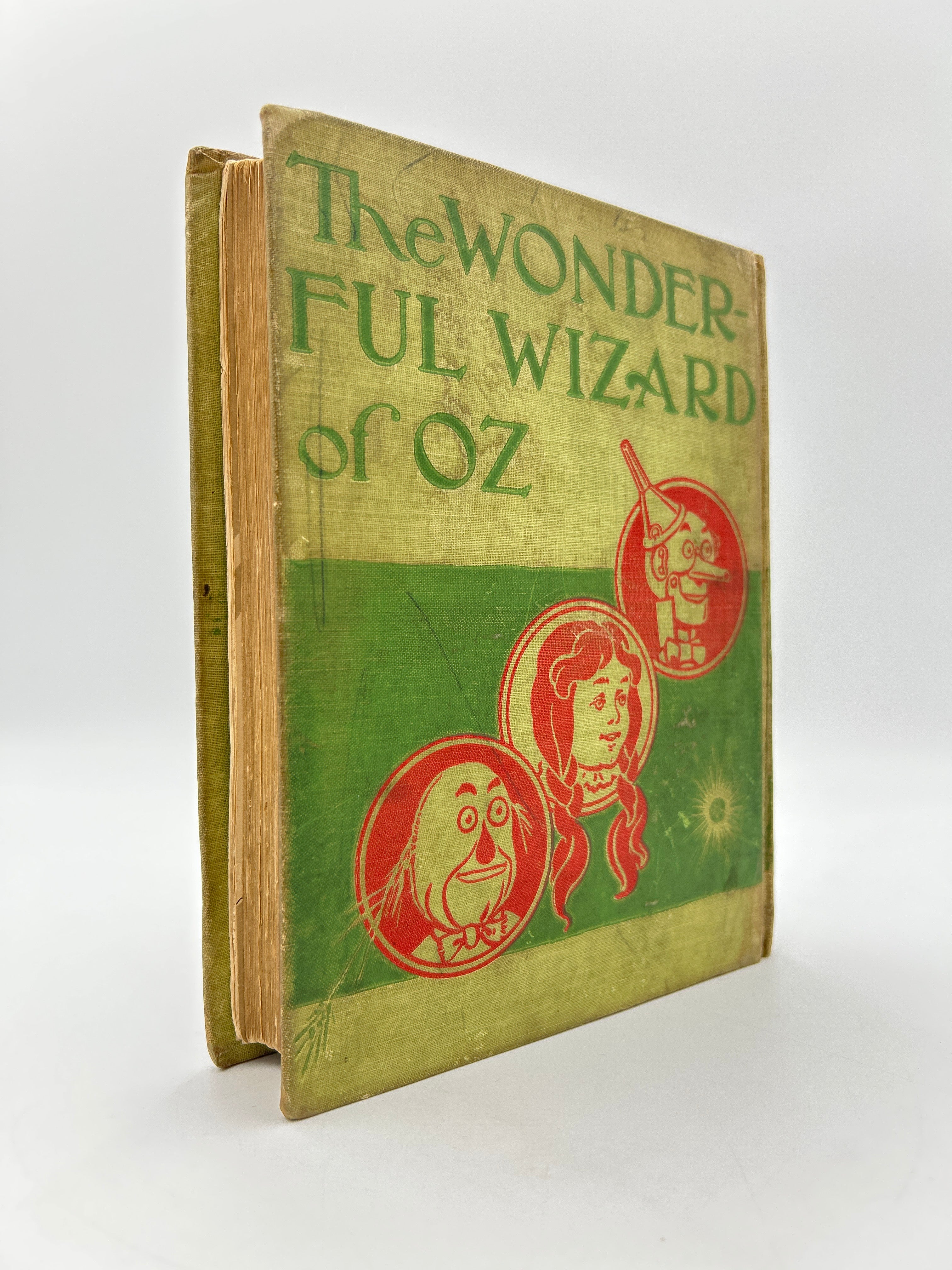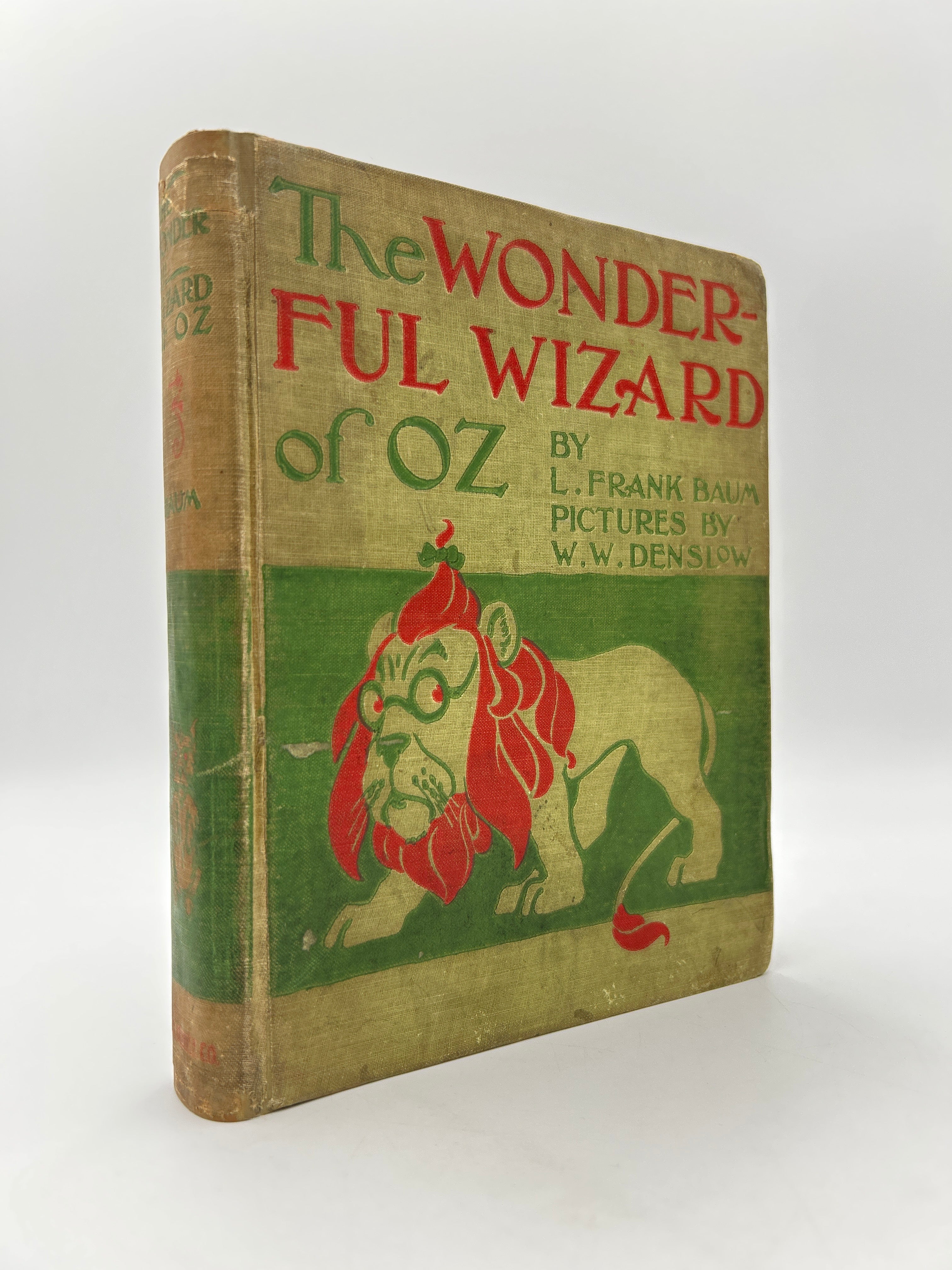The Wonderful Wizard of Oz
Couldn't load pickup availability
5WS L. Frank Baum. Pictures by W. W. Denslow. New York, Geo. M. Hill Co., May 1900. First Edition.
Notes
The Wonderful Wizard of Oz is a richly illustrated children’s fantasy novel blending whimsy, Americana, and gentle moral philosophy. Its journey follows Dorothy, swept from Kansas into a vivid world populated by extraordinary companions—Scarecrow, Tin Woodman, and Cowardly Lion—each seeking fulfillment as they travel the Yellow Brick Road toward a Wizard who may or may not be what he seems. The book’s visual character, shaped by W. W. Denslow’s Art Nouveau–inflected illustrations and color plates, helped establish an immersive, graphic storytelling style that was revolutionary for children’s literature in 1900.
L. Frank Baum drew inspiration from American folk culture, his own imaginative temperament, and his experiences in storytelling for his children. Influenced by the world of traveling theater, newspaper work, and emerging consumer culture, Baum sought to create a modern American fairy tale—free of the moral heaviness of European models yet filled with symbolic resonance. The name “Oz” famously originated from the “O–Z” label on a filing cabinet, illustrating Baum’s blend of spontaneity and creative playfulness.
The story’s timeless charm has allowed it to flourish across more than a century of adaptations: stage plays, classic films, radio dramas, lavish illustrated editions, reinterpretations such as Wicked, and regular scholarly re-examinations. Its themes—friendship, courage, self-discovery, and the search for home—continue to resonate with new generations. Today, The Wonderful Wizard of Oz is experiencing renewed attention through collectibles, reprints, television adaptations, and contemporary retellings, reaffirming its place as one of the most beloved and enduring American classics.
A true earliest first-state printing of The Wonderful Wizard of Oz is distinguished by several key points which all appear in this copy. on page 2 the publisher’s advertisement is enclosed in a box, whereas in the later second state the box is removed; on page 14, line 1 the text begins with “low wail on the wind,” changed in the second state to “low wail of the wind”; on page 81, fourth line from the bottom, the word “pieces” is misspelled in the first state but corrected in the later printing; on page 227, line 1 the line reads “While Tin Woodman,” while the second state corrects this to “While the Woodman.” The colophon at the end of the volume is set in 11 lines enclosed in a box in the first state, but is reset to 13 lines without a box in the second. In the earliest state, the type is perfect on the last lines of pages 100 and 186, whereas the later printing shows broken type on the last lines of pages 100 and 186. The verso of the title page is either blank or rubber-stamped with the copyright notice in the earliest printing, but carries a press-printed copyright notice in the second state. Finally, the illustration facing page 34 shows two dark blue blocks on the Moon (removed in later printings), and the plate facing page 92 contains red shading on the horizon—another feature eliminated in the later, second-state impressions.
There are three binding variants for the publishers imprint “Geo. M. Hill Co.” at the foot of the spine. Variant A features a plain sans serif type stamped in deep green. Variant B, of which this book is a copy has the same but is printed in red. Variant C features a serif type stamped in red with the ‘C’ encircling the ‘o’ in ‘Co.’ which is most common on later first printings.
This book is a true first state edition of The Wonderful Wizard of Oz.
Description
Light green cloth binding with dark green and red lettering on the upper board. Green lettering to spine and lower board. Lion illustration in green and red on upper board. Illustration of Toto on spine in green with red eyes. Faces of the tin man, Dorothy, and the scarecrow on the lower board in red. Professional repair work done to spine hinges as well as head and foot of the spine. Corners bumped. General scuffing to covers. Multicolored illustrations throughout with Twenty-four full-page illustrations. Pictorial endpapers. Inscription on preliminary flyleaf which reads “Merry Christmas to Horace from his cousins Florence, John, and Horace.” Extremely minimal smudges or marking throughout. Fine condition.
